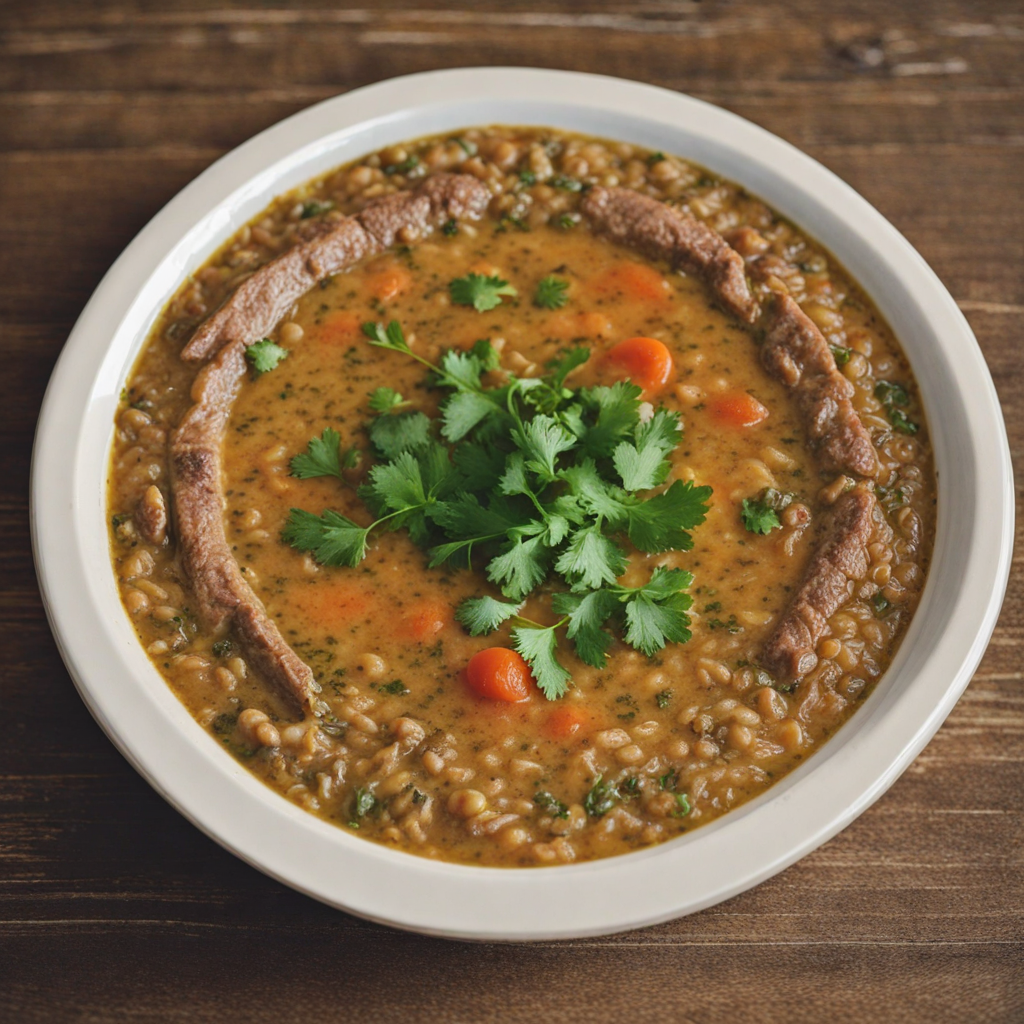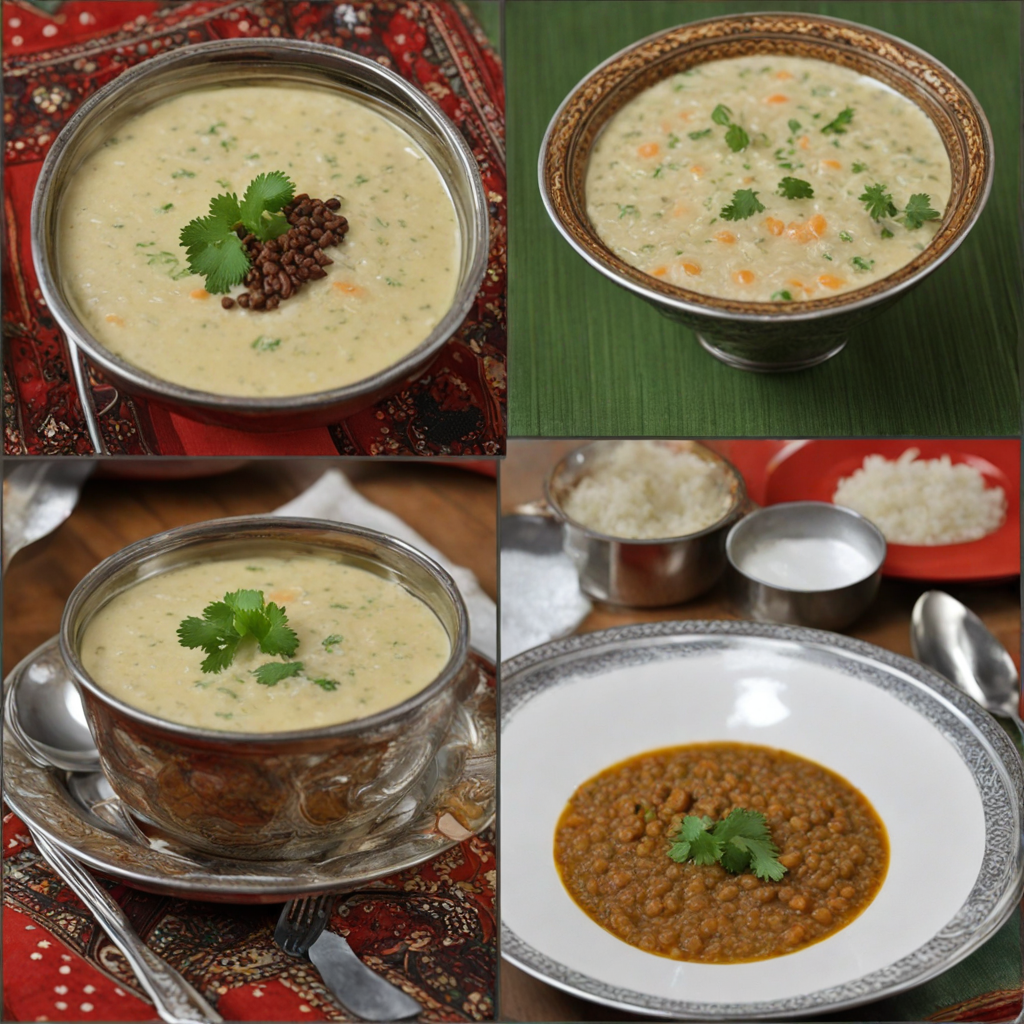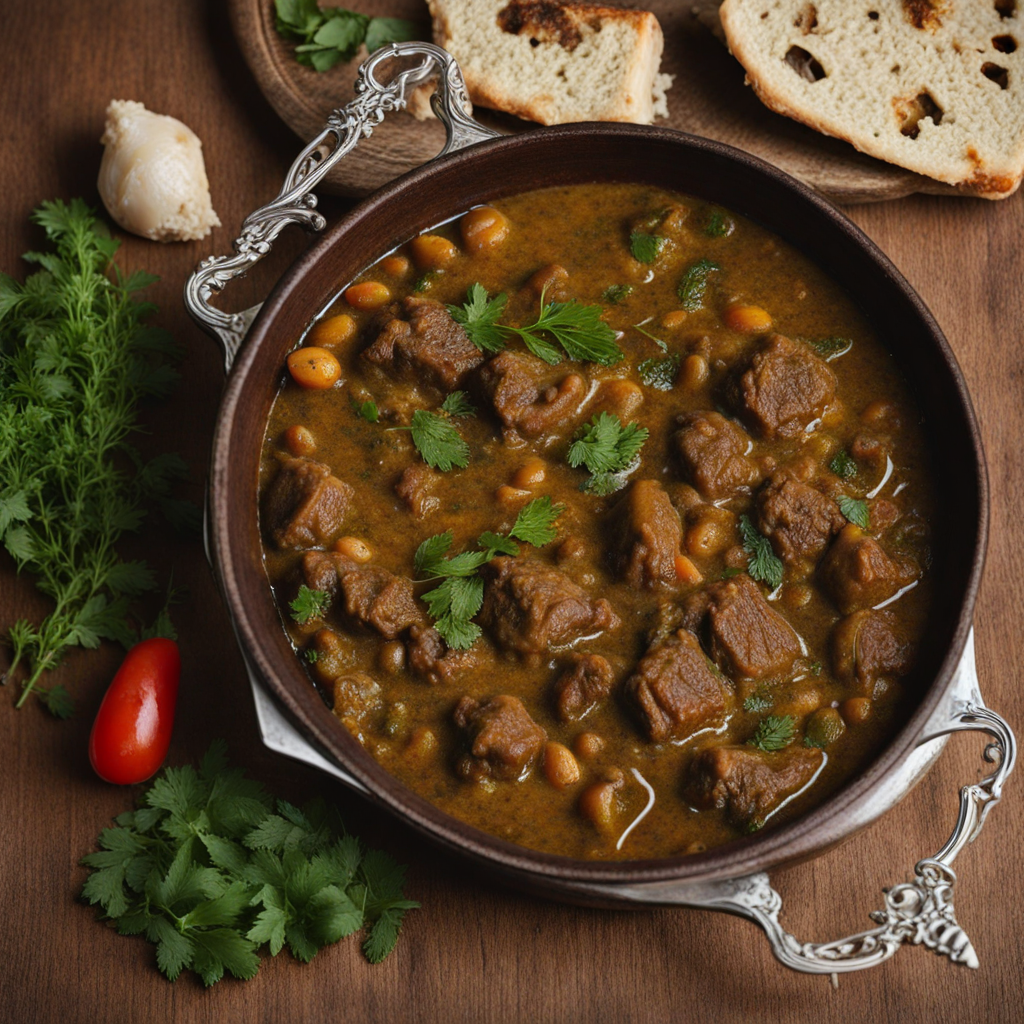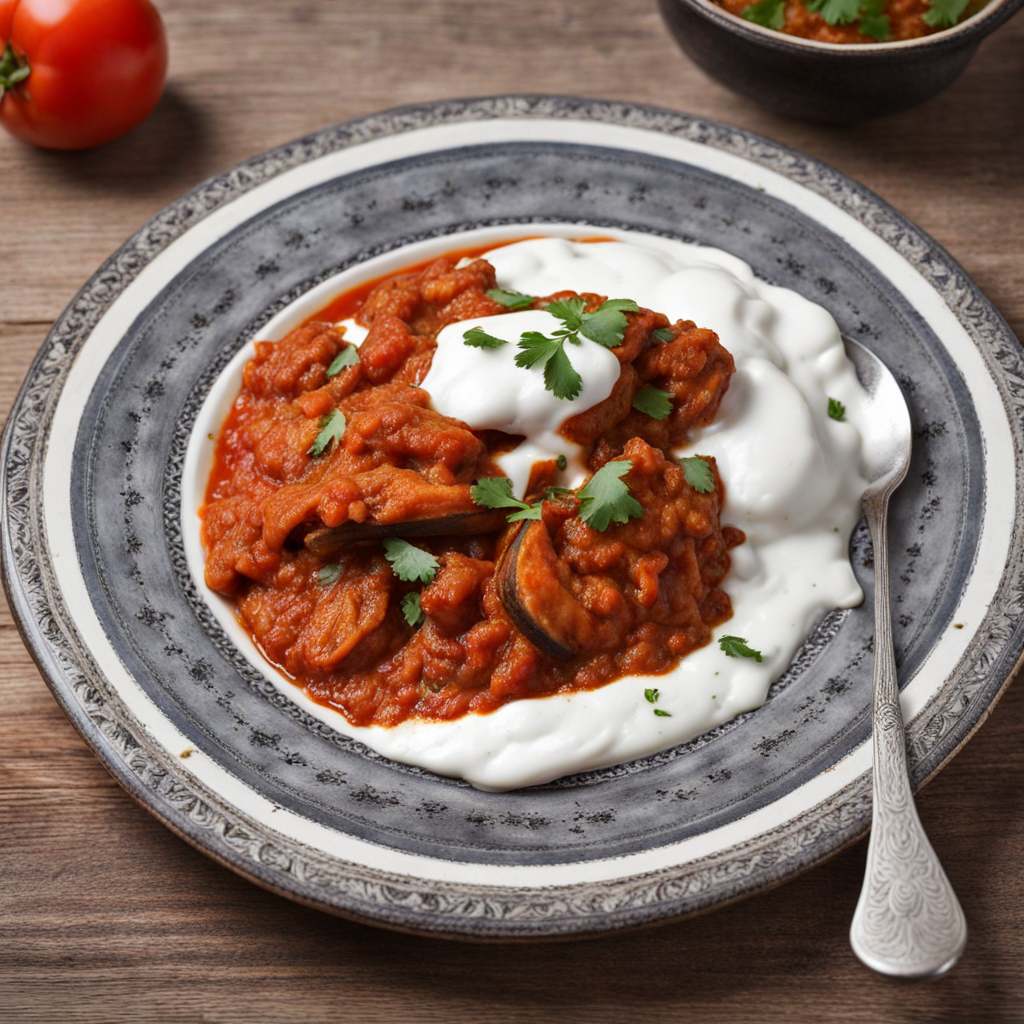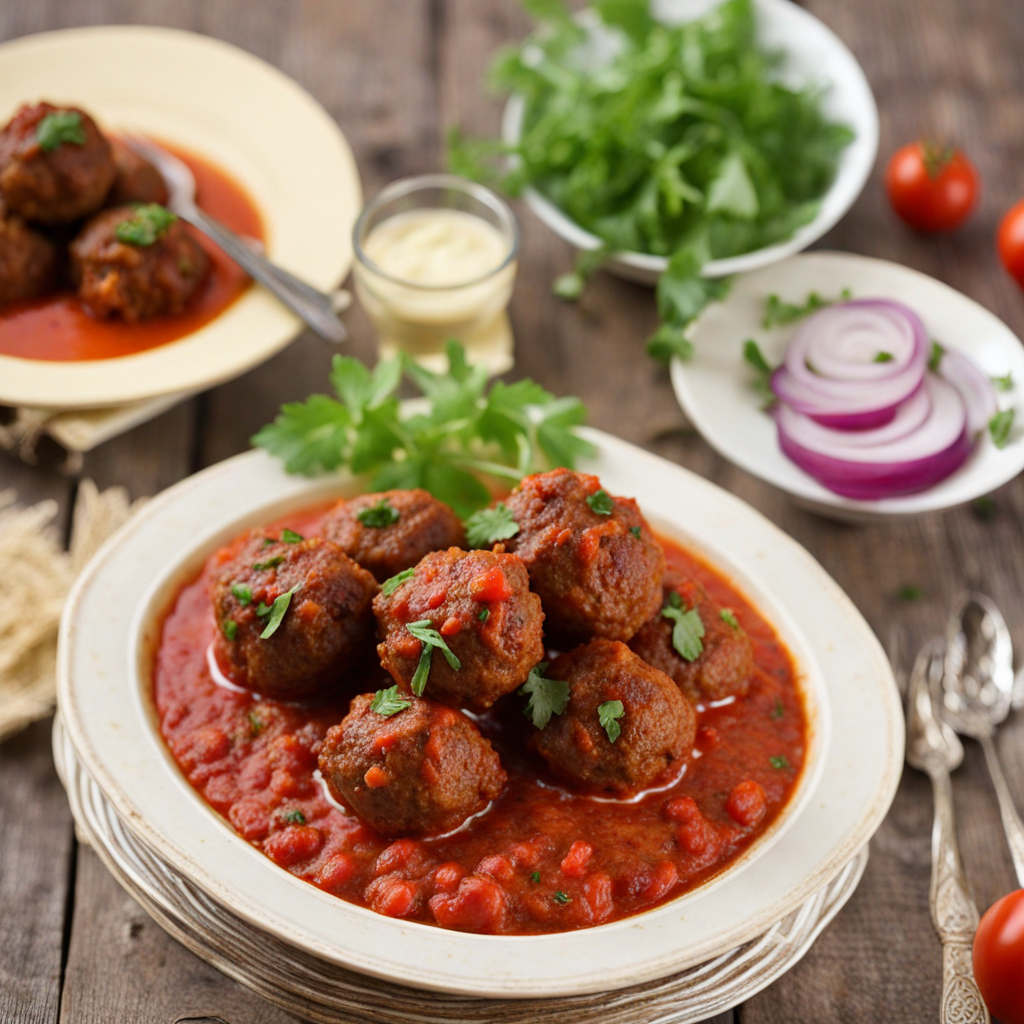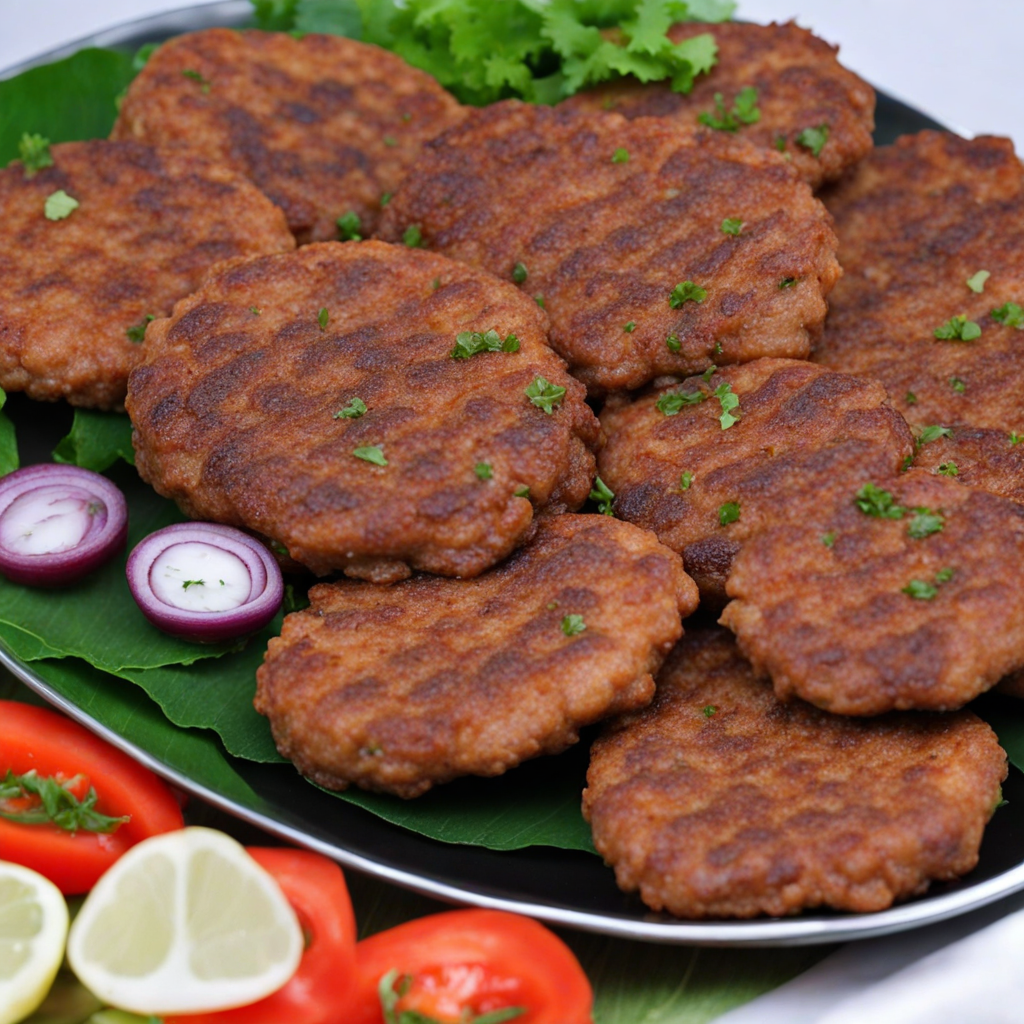Maushawa
Maushawa is a delightful Afghan dish that beautifully embodies the essence of traditional Afghan flavors. This hearty and wholesome dish is primarily made from rice, often infused with aromatic spices such as cumin, cardamom, and cinnamon, which create a fragrant base that captivates the senses. The rice is typically cooked to perfection, allowing each grain to remain separate while absorbing the rich flavors of the spices. To elevate the dish, tender chunks of lamb or chicken are often added, marinated with a blend of spices that not only enhance the meat's flavor but also infuse the rice with a savory depth. What sets Maushawa apart is its inclusion of fresh vegetables, often featuring peas, carrots, and sometimes raisins, which add a delightful sweetness and color to the dish. The incorporation of fresh herbs, such as cilantro and dill, provides a bright contrast to the rich, savory elements, creating a harmonious balance that is both satisfying and refreshing. The dish is often garnished with toasted nuts, like almonds or pistachios, adding a delightful crunch that complements the tender textures of the meat and rice. Served traditionally on a large platter, Maushawa is meant to be shared, making it a perfect dish for gatherings and celebrations. It invites diners to enjoy a communal experience, where each person can savor the layers of flavor and texture that this Afghan delicacy offers. Whether you're a seasoned foodie or a curious beginner, Maushawa promises an unforgettable culinary journey that showcases the warmth and hospitality of Afghan culture.
How It Became This Dish
Origin of ماشاوه ماشاوه, known for its rich taste and wholesome ingredients, has its roots deeply embedded in Afghan culinary traditions. This dish, which primarily consists of roasted or boiled wheat, has been a staple food in Afghanistan for centuries. The origins of ماشاوه can be traced back to the ancient agricultural practices of the region, where wheat was one of the first crops cultivated by the people. Afghanistan's diverse climate and fertile lands allowed for the growth of various grains, and wheat emerged as a key component of the Afghan diet. The preparation of ماشاوه typically involves soaking the wheat grains, followed by boiling or roasting them until they reach a tender consistency. This method not only enhances the flavor of the wheat but also makes it easier to digest. Traditionally, families would prepare ماشاوه during significant events, celebrations, and gatherings, symbolizing hospitality and community bonding. \n\n Cultural Significance In Afghan culture, food is more than mere sustenance; it embodies traditions, values, and a sense of identity. ماشاوه holds a special place in Afghan households, often served during religious festivals and family gatherings. The dish is not only a source of nourishment but also a means of bringing people together. Sharing meals is a vital aspect of Afghan culture, and ماشاوه, with its appetizing aroma and comforting flavors, plays a crucial role in fostering connections among family and friends. Moreover, ماشاوه is often associated with the concept of simplicity and humility. In a society where wealth disparities exist, this dish symbolizes the idea that the best things in life are often simple and accessible to all. Its preparation often involves family members coming together, making it a communal activity that strengthens bonds and reinforces social ties. \n\n Development Over Time As Afghanistan has experienced various socio-political changes over the centuries, so too has the culinary landscape, including the evolution of ماشاوه. During the time of the Silk Road, Afghanistan served as a vital crossroads for trade. This interaction with different cultures and cuisines introduced new ingredients and cooking techniques that enriched the traditional recipes, including those for ماشاوه. Spices, dried fruits, and nuts began to be incorporated into the dish, adding layers of flavor and nutritional value. In the late 20th century, Afghanistan faced significant turmoil due to conflict and instability. During this period, food scarcity became a pressing issue, leading to the adaptation of traditional recipes. Many families learned to make do with limited resources, often altering the ingredients of ماشاوه. Despite these challenges, the dish remained a cherished part of Afghan culture, demonstrating the resilience of the people and their culinary heritage. \n\n Variations and Regional Differences Across Afghanistan, regional variations of ماشاوه have emerged, reflecting the diverse cultural practices and local ingredients available. In some areas, the dish is prepared with a mix of lentils and spices, while in others, it may be sweetened with honey or served alongside yogurt. The use of different grains, such as barley or millet, has also been observed in certain regions, showcasing the adaptability of the dish. In urban areas, particularly in cities like Kabul and Herat, modern influences have led to innovative interpretations of ماشاوه. Contemporary chefs experiment with fusion cuisine, incorporating international flavors and techniques, while still honoring the dish’s traditional roots. This evolution not only keeps the dish relevant in today’s culinary world but also highlights Afghanistan's rich cultural tapestry. \n\n Modern Consumption and Popularity In recent years, there has been a resurgence of interest in traditional Afghan foods, including ماشاوه, both within Afghanistan and among the Afghan diaspora worldwide. As Afghan communities settle in new countries, they bring with them their culinary traditions, leading to an increased appreciation for dishes like ماشاوه. Food festivals, cooking classes, and restaurants dedicated to Afghan cuisine have emerged, creating spaces for people to experience and celebrate this flavorful dish. Furthermore, the global trend towards healthy eating has also contributed to the popularity of ماشاوه, as it is recognized for its nutritional benefits. Rich in fiber, vitamins, and minerals, this wholesome dish appeals to those seeking nutritious meal options. Many health-conscious individuals are drawn to the simplicity of its ingredients, often opting to prepare it at home or seek it out in restaurants. \n\n The Future of ماشاوه As Afghanistan continues to navigate its complex socio-political landscape, the future of ماشاوه remains intertwined with the identity of its people. Efforts to preserve culinary traditions in the face of modernization are gaining momentum, with initiatives aimed at documenting and promoting Afghan food heritage. Chefs and food enthusiasts are working to ensure that the stories behind dishes like ماشاوه are shared with future generations. Additionally, the rise of social media has provided a platform for Afghan cuisine to gain visibility on a global scale. Food bloggers, influencers, and home cooks showcase their interpretations of ماشاوه, creating a vibrant online community that celebrates Afghan culinary practices. This digital presence not only helps to keep the dish alive but also fosters a deeper understanding and appreciation of Afghan culture among a broader audience. \n\n Through its rich history, cultural significance, and ongoing evolution, ماشاوه stands as a testament to the resilience of Afghan culinary traditions. As it continues to adapt and thrive in a changing world, the dish remains a symbol of community, identity, and the enduring power of food to bring people together.
You may like
Discover local flavors from Afghanistan


